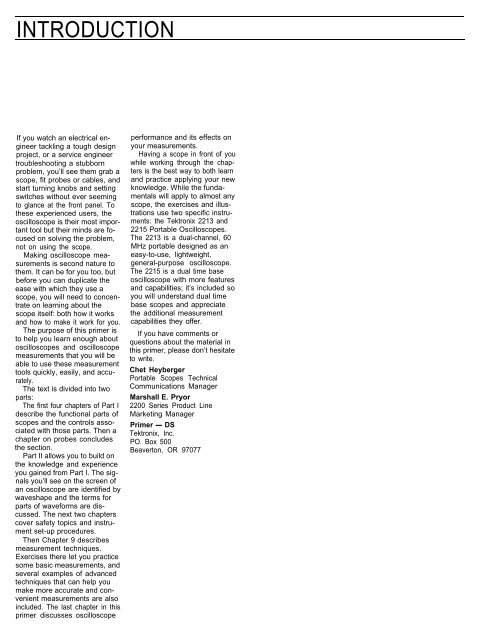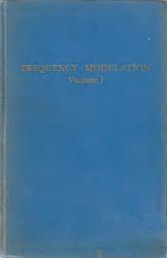THE XYZs OF USING A SCOPE Tektronix
THE XYZs OF USING A SCOPE Tektronix
THE XYZs OF USING A SCOPE Tektronix
You also want an ePaper? Increase the reach of your titles
YUMPU automatically turns print PDFs into web optimized ePapers that Google loves.
INTRODUCTION<br />
If you watch an electrical engineer<br />
tackling a tough design<br />
project, or a service engineer<br />
troubleshooting a stubborn<br />
problem, you’ll see them grab a<br />
scope, fit probes or cables, and<br />
start turning knobs and setting<br />
switches without ever seeming<br />
to glance at the front panel. To<br />
these experienced users, the<br />
oscilloscope is their most important<br />
tool but their minds are focused<br />
on solving the problem,<br />
not on using the scope.<br />
Making oscilloscope measurements<br />
is second nature to<br />
them. It can be for you too, but<br />
before you can duplicate the<br />
ease with which they use a<br />
scope, you will need to concentrate<br />
on learning about the<br />
scope itself: both how it works<br />
and how to make it work for you.<br />
The purpose of this primer is<br />
to help you learn enough about<br />
oscilloscopes and oscilloscope<br />
measurements that you will be<br />
able to use these measurement<br />
tools quickly, easily, and accurately.<br />
The text is divided into two<br />
parts:<br />
The first four chapters of Part I<br />
describe the functional parts of<br />
scopes and the controls associated<br />
with those parts. Then a<br />
chapter on probes concludes<br />
the section.<br />
Part II allows you to build on<br />
the knowledge and experience<br />
you gained from Part I. The signals<br />
you’ll see on the screen of<br />
an oscilloscope are identified by<br />
waveshape and the terms for<br />
parts of waveforms are discussed.<br />
The next two chapters<br />
cover safety topics and instrument<br />
set-up procedures.<br />
Then Chapter 9 describes<br />
measurement techniques.<br />
Exercises there let you practice<br />
some basic measurements, and<br />
several examples of advanced<br />
techniques that can help you<br />
make more accurate and convenient<br />
measurements are also<br />
included. The last chapter in this<br />
primer discusses oscilloscope<br />
performance and its effects on<br />
your measurements.<br />
Having a scope in front of you<br />
while working through the chapters<br />
is the best way to both learn<br />
and practice applying your new<br />
knowledge. While the fundamentals<br />
will apply to almost any<br />
scope, the exercises and illustrations<br />
use two specific instruments:<br />
the <strong>Tektronix</strong> 2213 and<br />
2215 Portable Oscilloscopes.<br />
The 2213 is a dual-channel, 60<br />
MHz portable designed as an<br />
easy-to-use, lightweight,<br />
general-purpose oscilloscope.<br />
The 2215 is a dual time base<br />
oscilloscope with more features<br />
and capabilities; it’s included so<br />
you will understand dual time<br />
base scopes and appreciate<br />
the additional measurement<br />
capabilities they offer.<br />
If you have comments or<br />
questions about the material in<br />
this primer, please don’t hesitate<br />
to write.<br />
Chet Heyberger<br />
Portable Scopes Technical<br />
Communications Manager<br />
Marshall E. Pryor<br />
2200 Series Product Line<br />
Marketing Manager<br />
Primer -DS 391199<br />
<strong>Tektronix</strong>, Inc.<br />
PO. Box 500<br />
Beaverton, OR 97077











